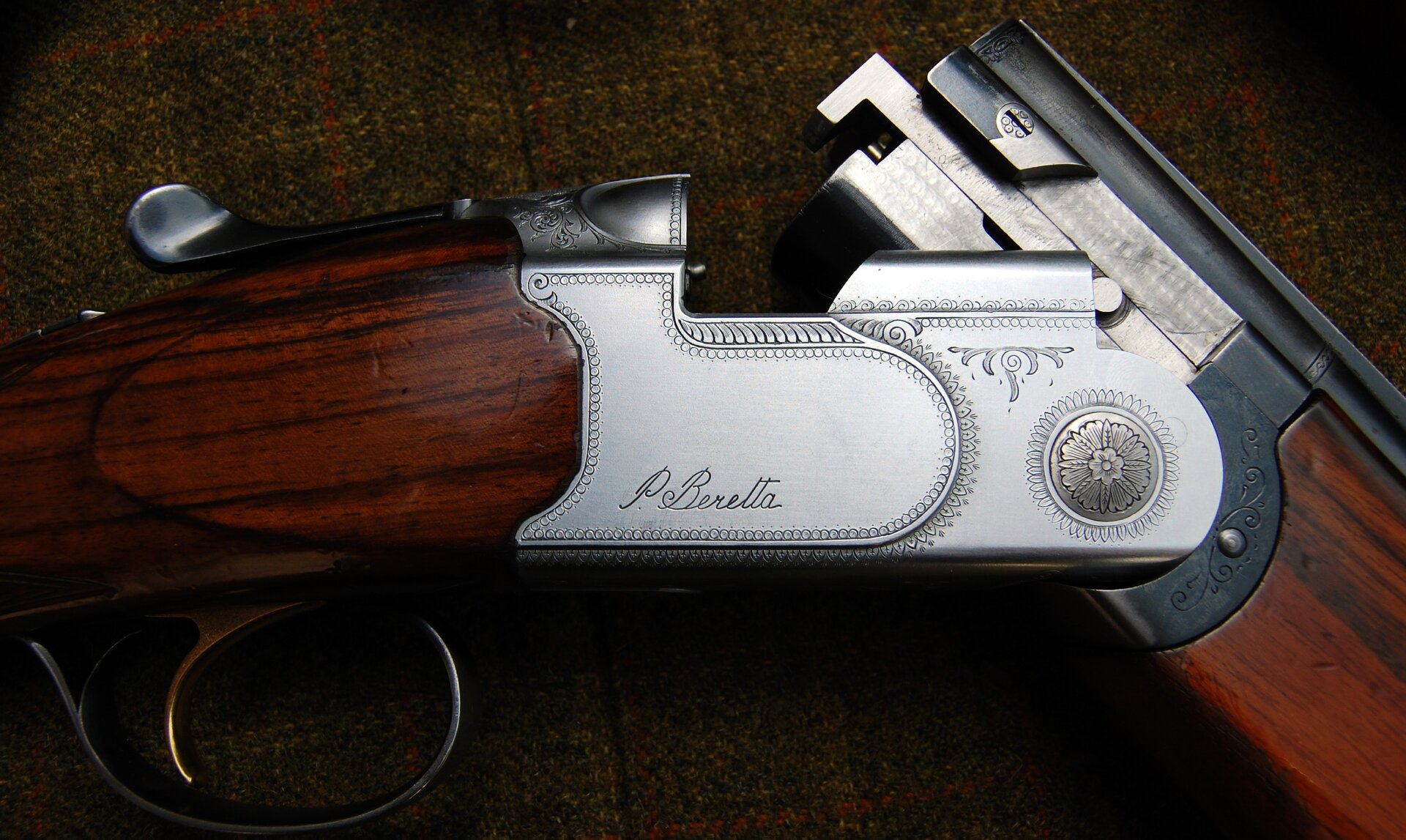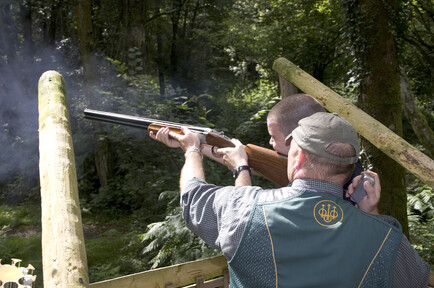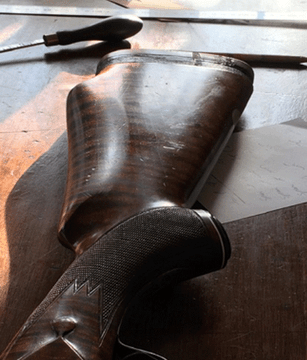Chris Cradock, one of our great commentators on shotgun shooting, once said of recoil and efforts to fix it: “(is)...a real problem for many. Some sufferers simply give up shooting. Others, more firmly addicted to the sport, will leave no stone unturned to find any palliative to alleviate their discomfort.”
What is recoil?
Like it or not, you encounter Newton’s Third Law of Motion – you got it, the one that goes “every action prompts an opposite and equal reaction” - every time a gun goes off.
Recoil is the impetus of the gun moving backwards: toward, against and into areas of the shoulder, cheek and face (sometimes the fingers, hands and wrists). This captures most of the fitter’s attention when looking at recoil.
How do you manage recoil?
The effects of recoil are inevitable when using a shotgun. It is a force you need to cope with. Recoil is predictable, it is therefore manageable - and that is where fitting the gun for comfort comes in.
To shoot well, and consistently well, we not only need to accept and deal with recoil as it is happening, but also be entirely OK with the prospect of recoil as it is about to happen. If you’re having difficulty with recoil even before the gun goes off then that is a mountain to climb right there!
Gun fitting and recoil
Problems with recoil (and these may manifest themselves in a number of different ways) is a common reason to undertake fitting work.
The actual process of fitting begins even before your session in the shooting ground. A few preliminary and background questions will be asked as you book in. This better directs fitting generally, but is especially important in recoil matters.
If gun fitting is to provide a recoil fix, options must be explored and demonstrated whilst shooting. My firm belief is that the fitting of a shotgun is a form of engagement where you must actually shoot; actions and reactions must be observed in order to explore, test and fully underpin fitting solutions.
Recoil and shooting performance
Trouble with recoil has a dreadful habit of dropping shooting performance down through a hole in the floor and is perhaps the best example of a negative feedback loop in shooting sports. Problems feed problems and on and on it goes.
Recoil difficulties are also cumulative: the longer these persist the worse they get.
Gun fitting and its influence on recoil
Gun makers have long wrestled with the conundrum of pushing the full potential of shotguns whilst working to constrain the worst effects of recoil. Within this exhaustive endeavour, even the best designs we care to figure will, at some point, bump into basic physics and, eventually, absolute limit.
Gun fitting procedure has much to offer the task of taming recoil. Where full opportunity is taken to shape, proportion and contour stock and forearm pieces, much can be done to control and dampen the effects of recoil.
On firing, recoil felt through the gun can be reduced, slowed, interrupted, subdued or directed. Suitably informed, the stocker may design and shape point-of-contact features to stock-work that have capacity to influence felt-recoil favourably and significantly.
Stock pads are a go-to ‘fix’ for many who are sensitive to recoil through their guns. A cost effective corrective on factory produced guns for sure, but the palliative potential of padding is often compromised by the finished pad not adequately matching the contact-contour of the user’s shoulder.
Not all recoil problems will attract the same fitting cure. Discomfort at cheekbone, jaw-line, neck or shoulder will require different curative approaches, or, as is often the case, a combination of several acting one with the other.
Are there any positives to recoil?
We are used to viewing recoil in strictly negative terms. Most will only seek out guidance on a fitting solution to recoil when a problem impacts their shooting experience detrimentally. We are only too aware of the negatives, but are there any positives to recoil?
I go out pretty much on a limb here and push against, at least in part, received wisdom dictating that recoil is framed always as bad, whenever and however it is encountered. Well, is it? Is it always?
Yes! Recoil signals outcome!
There is firm anecdotal evidence that recoil acts as a recognisable form of feedback when we shoot. Recoil, suitably managed and controlled, perceived by the shooter comfortably, signals outcome. It is an innate component of the shot inviting real-time feedback, affirmation, motivation, even reassurance.
It could just be that feeling the gun going off serves a purpose! Certainly when observing critically the performance of very good sporting shots, (comfortable) recoil is a phenomenon they do appear to get ‘something’ from.
Might it just be, the shot being in every way good, that there’s something about recoil that is in itself comforting? Is there proof of that? Why not fit for comfort in your own shooting and prove it for yourself?
“[On recoil and kick] . . . the price of anything shouldn’t be greater than the return. In shooting, it goes one step further: the less we have to pay, the more pleasure we get.”
Michael McIntosh
Enjoyed this post and want to know more?
Why not contact us at Glenzier Sporting. Mike Smith has run the Whithorn shooting ground for 20 years and offers teaching lessons and gun fitting.



